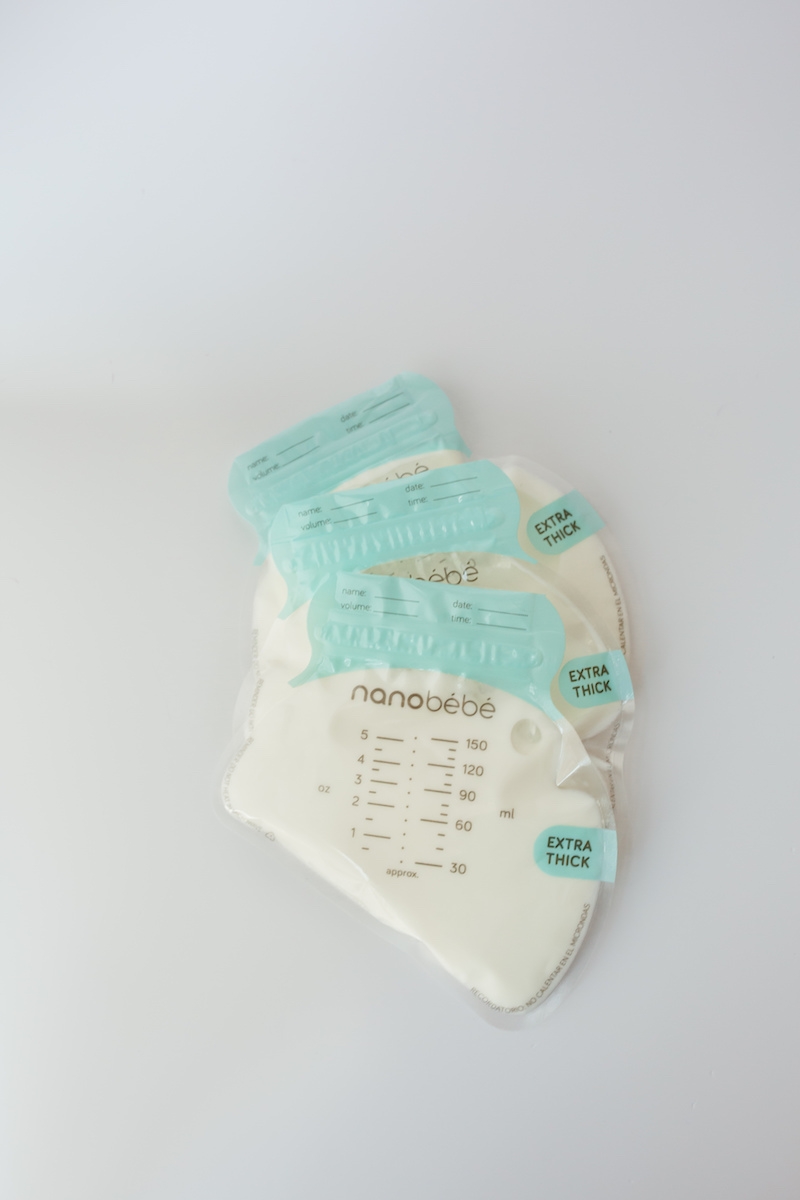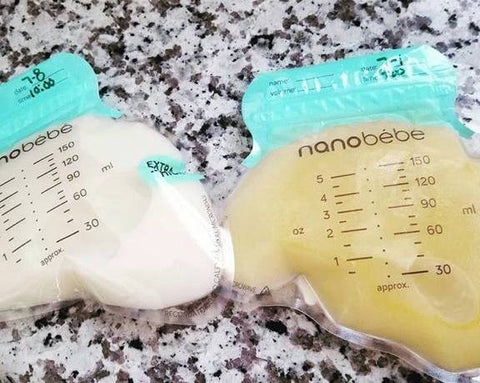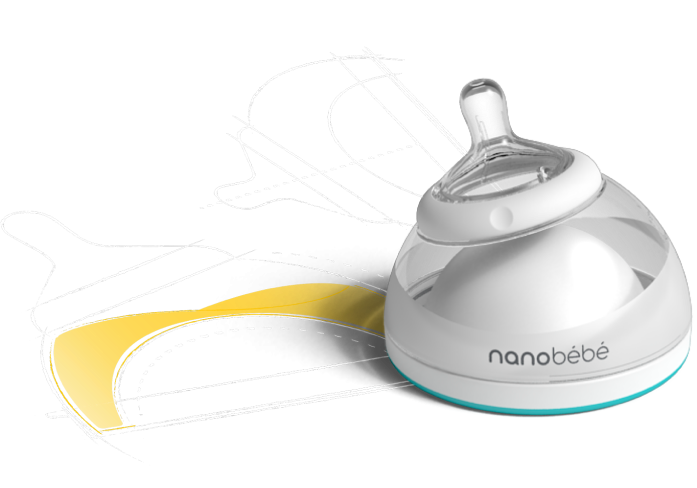Liquid Gold: The Nutritional Qualities of Breast Milk
Breast milk, often termed "liquid gold," adapts to your baby's requirements unlike formula. As weeks pass, your milk supply aligns with your little ones growing needs.

Dr. Larissa Farnam

Breastmilk has often been called the “liquid gold” of infant nutrition. Unlike milk substitute (baby formula), the composition of human milk is not static and it adjusts to naturally meet your baby’s needs. For starters, your body will likely produce just enough colostrum in the first few days to fill your baby’s tummy, which is about the size of a marble. Over the next couple weeks, your milk supply will increase and the nutrients present in the milk will adjust to meet your baby’s needs.
Colostrum

Mature Milk (Left) - Colostrum (Right)
Milk production starts with colostrum. Although it may seem that those few drops of yellowish milk (probably less than 2 ounces over the course of an entire day) are not nearly enough to satisfy a growing newborn, this milk is some of the most nutrient-dense so it provides everything a baby needs in just enough volume to fill their tiny tummy.
Colostrum contains high levels of immune factors, also called immunoglobulins, which help coat and seal the stomach lining that starts out permeable at birth, and helps prevent harmful pathogens from entering the digestive system. It also contains antioxidants and helps establish healthy bacteria for normal gut function while also acting as a laxative to help the baby clear meconium (the dark, tarry stool). Colostrum is higher in vitamins A and E, protein, zinc, and potassium than mature milk, which is higher in fat and lactose.
Transitional and Mature Milk
Transitional and mature milk have a high water content—almost 88%! Human breastmilk is all the fluid a baby needs, even in hot weather, to stay perfectly hydrated. Transitional milk is just as the name implies—the milk that transitions between colostrum and mature milk. This milk comes in around day 3-5 and lasts for about two weeks.
By the time your baby is a month old, your breastmilk will be in the mature milk phase. Transitional and mature milk are usually lighter and whiter in color than colostrum, but the color of breastmilk can change based on any foods, medications, or vitamins you take, as well as the nutritional requirements needed to fight off illness for either you or your baby.
Loaded with more than 20 amino acids, breastmilk provides nutrients necessary for the development of the brain, eyes, digestive system, nervous system, and other tissues in the body. Some amino acids may help induce sleep, which may be part of the reason babies love to fall asleep at the breast.
A special feature of breastmilk that cannot be found in milk substitute is the presence of alpha-lactalbumin, which aids in digestion and helps regulate milk synthesis. Some studies even show it has cancer-fighting properties! There are also compounds, such as microRNAs that can help with gene expression and stop diseases from developing in the body.
Foremilk and Hindmilk
Foremilk is the milk that usually starts at the beginning of the feed. It tends to be thinner and is higher in carbohydrate content, providing a great source of hydration for the baby.
The milk toward the end of emptying a breast is sometimes referred to as hindmilk and tends to be thicker and creamier because of its higher fat content. It is a good idea to empty your breast—whether it is in one complete feeding or by starting the baby on the breast that you left off on in the previous feeding—to help make sure the baby is getting all the nutrients from both the foremilk and the hindmilk. But over the course of a day, if the baby is nursing well, the overall milk consumption balances out so you don’t have to stress too much about what type of milk your baby is getting and when.
Even after starting solid foods, babies get a majority of their calories from breastmilk, along with all the other important nutrients, so continuing to breastfeed for at least the first year of life is still the recommendation of the American Academy of Pediatrics. Every drop of breastmilk provides a little more of this nutritional liquid gold that helps keep babies healthy!
*Nanobébé is thrilled to welcome guest bloggers. The views and opinions represented in these blog posts belong solely to the guest blogger and are not the legal responsibility of the company. The owner of this blog makes no representations as to the accuracy or completeness of the information provided by the guest blogger and will not be held liable for any errors or omissions of information nor for the availability of this information.

Dr. Larissa Farnam
Dr. Larissa Farnam, DHSc RD LD IBCLC is a registered, licensed dietitian and a Board Certified Lactation Consultant who resides in Myrtle Beach, SC. She is the owner of Lull-a-baby Lactation Consultants, an in-home lactation consultation private practice. Larissa is also a mother to two boys with another baby on the way.
Share this post




